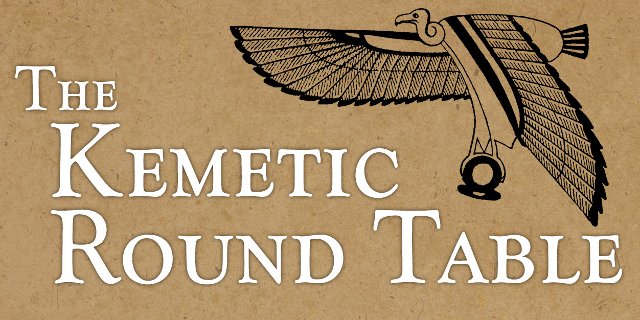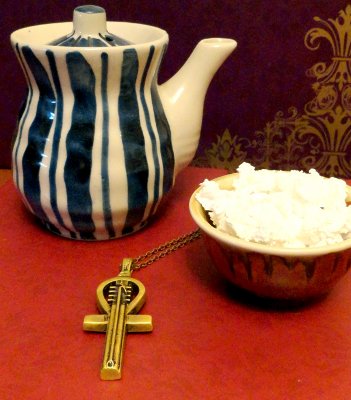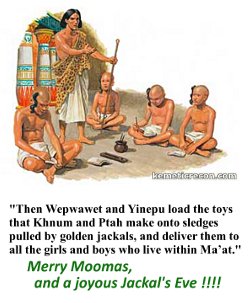Since my last post on this subject, I’ve been thinking extensively about how I wanted to continue it. I always knew, no matter the responses I received on that last installment, that I would get back to it. The thing about theological discussion is that as much as we may want to philosophize about it as often as possible, most of us have a life. And since that post went live the day before I started my new job, I haven’t really been able to put on my philosopher’s hat and get back to it. And I will be completely honest, considering the varied responses because of my last post, I’ve wondered if I should even bother with it. It seemed like no one but a select few really understood what I was getting at when I posted last time, so why bother moving forward with it? Giving up, however, is probably not living in ma’at though.
As a quick recap, I left off wondering what in the world ma’at actually is.
I think a part of that is because I am constantly questioning this main, huge, big, important concept to my religion: What is living in ma’at and how can I do that?
I forget about this concept all the time. I said it above; I’ll say it again. I forget about living in ma’at all the time. There are days when I’m not nice. There are days when I’m too involved in my own stuff to stop what I’m doing and help others out. There are days where I’m so busy running from the second I’m up that I forget about this whole integral part of my religious practice.
I don’t know what this thing is, honestly. I don’t really know.
But I know that my gods need it.
They need it and I need it.
I just have to figure out what “it” is.
I left off with the knowledge that it really is something but what that something is, I couldn’t have said. I’ve taken the last three months to ponder this. Over the months, as I sat back and let everything process in my subconscious, I’ve been slowly but surely trying to figure out what all this stuff is, what it means, and how I can definitely add it as part and parcel into my life. Without their knowing it, my Kemetic community has been helping me – first with their helpful comments on my blog entry and secondly, by just being themselves – so that I’ve been able to come to terms with why I have issues, specifically, with the shopping cart theology and what I actually think ma’at, and therefore living in it, may just entail.
Let’s revisit the SCT, linked above. In my last post, definitively all I could say was that it didn’t feel like this theology worked for me any longer. In one of the numerous responses to my last entry, I was told to “re-read the essay.” I’ll admit that I have a few times since then as well as re-reading it to just prior to writing the entry. I was almost hoping that, magically, by re-reading the words that had been written I could either define myself in the version of ma’at Kiya was espousing or, perhaps, at least figure out where I was having troubles with it. If I could diagnose the issue, I could fix it by either deciding I was full of it when I said it didn’t work for me or comprise a personal theological discourse to counteract the shopping cart essay. And by counteract, I mean, you know find something that worked for me that I could try to explain to others in case they needed something else, too.
I think I’ve figured it out.
When writing that last post I said, “The thing is that I tend to view this theology on its face as ‘orderly.’ And I don’t necessarily equate ma’at with ‘orderly.’ It reminds me, in a manner of speaking, of those movies where humans line up like the mindless little automatons we can be and do as we are bid.” I wasn’t quite satisfied with that explanation back then and I’m less so now. The thing is that I still believe it equates to “orderly.” I still honestly think that the SCT is all about order and less about balance. And as time has gone by, I’ve come to realize that my version of ma’at is simply that… it is balance. And for whatever reason, I don’t see the theological essay as balance, but as order. And while they go hand-in-hand, according to definitions and all of that, they’re not quite the same to me.
While thinking about revisiting this topic, I went back through the responses on my entry. I took careful note of Devo’s response. Out of everyone in my Kemetic group, I think our definitions of ma’at mirror each other very well. She can pull from Shinto and explain it in ways that my work in the world of voodoo doesn’t quite afford me. I’m left guessing and floundering while she can at least appear to got her act together on this. But, when I was re-reading all those responses the last few days what particular struck me was, “It really is a matter of how you look at it. Ma’at is balance. That’s the easiest way to say it. Because it’s different for each of us- we can’t get too definite in our answers. We can’t pin down our definition to something that is too narrow- or we lose the point, the beauty that is ma’at- that its diverse.” Ah, yes… that’s what I’ve been aiming for and all I really had to do with steal Devo’s brain and borrow it for a while.
Part of the reason, I think, I have such a difficult time with “order” over “balance” is because of the perceived notions, from an American perspective, that I associate with that particular word. Order to me tends to be seen in terms of black and white, guilty or innocent, light or dark. It also means putting things away in their designated spaces, but those designated spaces are, again, seen as either this or that and never in between. Balance, to me, doesn’t quite hold the same association.
In some perspectives, I can definitely see it as having the same connotation as order does for me. I have no delusions here; someone will see that paragraph and tell me that I’m wrong because balance means those things. But not necessarily. As Devo went on to say in that prolific comment, “I would also say that ma’at is big picture. We forget that sometimes. The big picture. We’re so caught up in the OMG RIGHT NOW SUCKS that we ignore what great things can come in the future from acts that are being done right now. As I’ve said a lot recently- sometimes NTR throw you under a bus. Usually, its because it supports a bigger picture. It sucks, but it’s part of ma’at. It’s part of maintaining the whole.”
Ah… shades of gray.
And that has always been my major issue with ma’at and the concept of living in it. I tend to view ma’at as shades of gray as opposed to anything concretely this or that. Sutekh is considered a god of chaos, and yet, he also protects Re’s solar barque on its voyage through the Duat. Sekhmet is a blood-thirsty warrior goddess who once tried to destroy humanity, however she is also the protector of the pharaoh, an upholder of ma’at. In terms of black and white, we would say that Sekhmet and Sutekh are “bad deities,” but they’re not. They provide other helpful bases that we as a people who were not raised with this same fluid morality have difficulty grasping.
Let’s take a look at execration rituals for a minute.
In ancient Egypt, there really wasn’t much an individual [poor] person could do in order to maintain ma’at. It was not their roll in life to be a part of large rituals that would keep the world from falling apart at the hands of isfet and its agent, Apep. However, they had, at their disposal, execration rites to protect them from their enemies, either perceived or real, human or demonic. In some ways, we may view these types of rituals as a kind of curse against someone or something that may be trying to cause pain and harm to a specific individual. In that regard, some people who see things in black and white would determine that these rituals were “bad.” They are, in effect, asking for harm to come to another human being so, from that supposition, we assume that these were “negative” rituals. But point of fact, and the evidence indicates, that these rituals were not seen that way. They were another form of maintaining ma’at on a level with people who had no stakes to play in the cosmic game, but had stakes to play in the living game.
Shades of gray, indeed.
Right now, I can definitely attest that after three months of pondering, back tracking, pondering, giving up and just generally trying to put all the puzzle pieces together, I can clearly say I know what I think ma’at actually is. If someone else asks, I can say, clearly, that I think of it as balance although the type of balance that I may associate with it may not be the same as others willing to openly and congenially discuss it with me. And that’s okay, too. Maybe the open discussion of what it is and what it isn’t to other people is part and parcel to living in ma’at, too. As Devo said, we can’t clearly define it too much because then we’ll lose the point and the beauty that is ma’at.
Or, as Cher Horowitz says in the iconic movie, Clueless,
Cher: No, she’s a full-on Monet.
Tai: What’s a Monet?
Cher: It’s like a painting, see? From far away, it’s okay, but up close, it’s a big old mess.







 Here’s a good definition: —>
Here’s a good definition: —> 